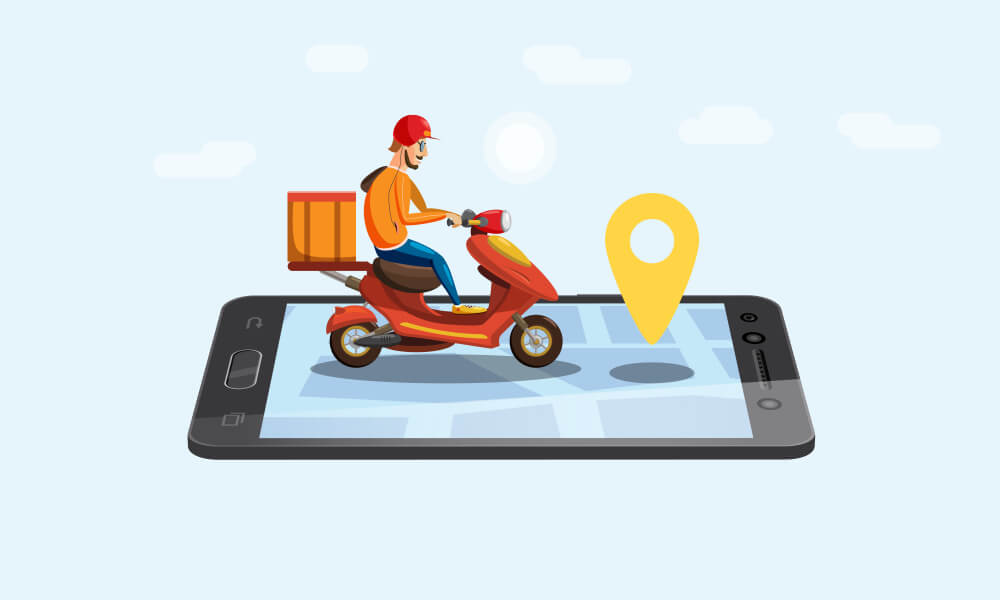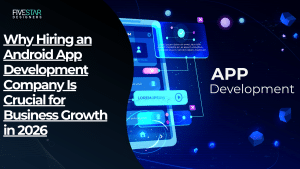In this competitive era, learning how to build on-demand delivery app is a good idea. On-demand delivery applications have revolutionised how we receive goods and amenities in this frantic age of technology.
The ease of getting products carried straight to our doorsteps has attracted many individuals. These products can be groceries, meals, or shipments. It has grown into a requirement for a lot of individuals.
On-demand delivery applications are in high demand now that we head into the latter part of 2023, creating an income-generating chance for budding entrepreneurs. To provide an intuitive user interface, thorough preparation, market analysis, and the execution of essential functions are necessary.
Every phase is crucial to creating an application that fulfils your customer’s demands. You must carefully select the best technological stack when identifying your intended audience and expertise. If you have concerns regarding how to make on-demand delivery app, this article will discuss how to build on-demand delivery app.
Building An On-Demand Delivery Application
Selecting the Proper Domain
It marks the initial stage of developing any on-demand delivery application. Ensure that there is some talk regarding your domain in the business community before you decide to use it. The brand name must be memorable and pertinent to your product or service.
You are prepared to proceed if you have begun considering a specific idea. If you don’t have a proposal, you should search online for the industry demands given the present state of affairs.
Thorough Investigation and Analysis
Once you’ve chosen the approach for developing your on-demand delivery smartphone application, thoroughly analyse and evaluate the marketplace. It is going to assist you in identifying the kind of consumer base that you’re addressing.
For a smartphone application to continue to be productive over a prolonged period, you must concentrate on a user base that is relevant to your niche. By doing this, you’ll spare a ton of time and money. The key is finding the right audience by considering factors like age, geography, socioeconomic status, occupation, lifestyle, and tastes.
Selecting An Appropriate Business Model
The on-demand delivery application’s sustainability depends on selecting the best corporate approach. Explore other business models, including commission-based, subscription-based, or a hybrid of the two.
The commission-based business strategy entails deducting a portion of the payment for every app-facilitated transaction. This strategy functions effectively for systems that link consumers and vendors of services.
On the contrary, a subscription-based method gives customers unrestricted possession of shipment services in exchange for a fixed annual or monthly cost. It results in generating consistent income streams. It is necessary to promote your application simultaneously, as marketing communication plays a vital role.
While choosing your company model, keep your intended target market, current market conditions, and rivals in mind. Examine the benefits and drawbacks of every model. Pick the option most closely fits the application’s value offering and financial objectives.
Your future profitability depends on your ability to modify and improve your company’s operational strategy. The best practice is to receive consumer input and insights and then make changes accordingly if required.
Choosing a Reliable Service Provider
Once you have determined your needs, done a little investigating, and selected the ideal company framework, it is time to choose a suitable service provider for your company. It is necessary to establish a reputable service provider.
Therefore, it always makes sense to ask for guidance from professionals whether you’re seeking to design a smartphone or web-based application. This might come from a seasoned mobile application development firm.
Finally, you have to consider user input properly. It demonstrates that you respect your consumers by frequently adjusting whatever they find objectionable. It will assist in creating a solid basis for your clientele. You may increase your offering in response to customer feedback.
Choosing The Right Development Stack
Choosing the right technological platform is essential to build on-demand delivery app. While selecting this choice, consider elements like adaptability, efficiency, and development effectiveness.
You can use either native or cross-platform development tools to create on-demand delivery app. Native frameworks with accessibility to platform-specific functionality, such as Swift for iOS or Kotlin for Android, offer the most efficient performance.
By allowing production across many platforms with an identical codebase, multi-platform frameworks can help conserve resources and time. Do an in-depth analysis before making a choice.
Furthermore, pick a dependable backend system for the mobile application to handle user authorization, data administration, and connectivity with third parties. Some popular choices include Ruby on Rails, Django, and Node.js.
When selecting the technological stack, assess the level of competence of the team developing it in case you are doing in-house development. You must also take into account ongoing maintenance needs. Creating a robust on-demand delivery application depends on finding the ideal balance between efficiency, production speed, and extensibility.
Essential Features For An On-Demand Delivery App
An on-demand delivery application must have several crucial features to offer an unparalleled user experience and effective processes. Registration by users is necessary since it makes it simple for people to register profiles utilizing their social network or email details.
After logging in, consumers should efficiently execute delivery requests inside the application’s interface. Additionally, the user must be allowed to define the products, drop-off and pickup spots, and any specific directions.
Real-time tracking is an essential function that gives users trust by enabling customers to keep track of the current state of their delivery immediately. With the help of this function, consumers can keep tabs on the status of their purchased items and learn when they should expect them, assuring clarity and lowering worry.
Connectivity with payment platforms is essential for enabling safe and simple payments. To satisfy customer needs and guarantee seamless transactions, the mobile application should enable a range of payment options, such as debit and credit cards, electronic wallets, or cash on arrival.
Individuals having the option to assess and comment on their shipping encounters not just offers insightful input, but also assists in raising the standard of service. Other people selecting a delivery service can use these evaluations and ratings to help them make a wise choice.
Users need to push alerts to stay updated and interested. Users can keep informed while being engaged with the shipping process by receiving alerts about request progress, delivery assurances, or any other significant information linked to their purchases.
Unlocking Revenue Stream Through Monetizing Strategies
After spending a lot of time, money, and resources creating your on-demand delivery application, developing a monetization plan to bring in money and keep your company afloat is critical. Here are a few handy ways to make money off your application:
Delivery Fee
Collect a delivery fee for every purchase placed using your on-demand delivery application. Consider adding several price systems based on proximity, order size, or urgency. This will help in generating revenue.
This kind of income guarantees your company’s success and aids in defraying operating expenses. By establishing fair and open delivery fees, you may offer an easy delivery option while making money off every purchase.
In-App Advertising
Increase the income from your on-demand delivery application by adding in-app advertising. Subscribers of the application can view tailored adverts, and you can work with companies to collect fees for the placement of advertisements. Additionally, you may affiliate with advertising platforms to get income from clicks or views.
Ensure the adverts are not invasive and complement your application’s subject matter and aesthetic while maintaining a balance between them and the client’s engagement. Use your mobile application’s client base and interaction to draw in marketers and create new revenue sources.
Data Monetization
Benefit from the data that your on-demand delivery application has acquired by providing enterprises and research organizations with insightful information and analyses. Analyze customer preferences, supply trends, and well-known areas to give helpful information.
Organizations can use this information to arrive at intelligent choices. They may streamline their business processes by paying fees for having access to it. Ensure appropriate privacy safeguards are implemented to safeguard user details and adhere to data protection laws.
Loyalty Programs
To increase customer satisfaction and encourage returning customers, integrate a reward program into your on-demand delivery application. Provide users with incentives, scores, or coupons for every purchase they place via the mobile application.
Join forces with companies to give devoted customers exclusive advantages like coupons or special attention. You can improve the retention of customers and enhance income by encouraging loyalty from consumers.
Verify that the incentive program is simple to use, follow, and redeem. This will increase its capacity for creating strong client ties. This will also generate considerable revenue for your business. Following these basics helps you understand how to start a delivery service app.
In A Nutshell
In 2023, developing an on-demand delivery application represents a significant prospect in the quickly changing digital environment. You can build on-demand delivery app by adhering to the crucial procedures indicated in this article. This article answers your query about how to make a delivery app.
You may position yourself for prosperity by identifying your audience of choice, choosing the appropriate technological stack, and putting a workable business plan into place. Shipping fees, memberships, collaborations, and advertising are a few monetization tactics that provide ways to make money and support the expansion of your business. You can build on-demand delivery app that satisfies changing customer expectations and capitalizes on the burgeoning market. The current market looks for easy and effective delivery services. You can provide these by carefully strategizing, designing with the user in mind, and adjusting your product frequently.




